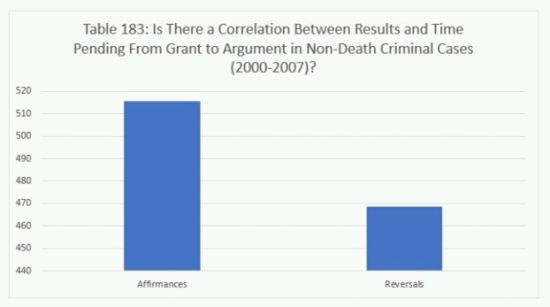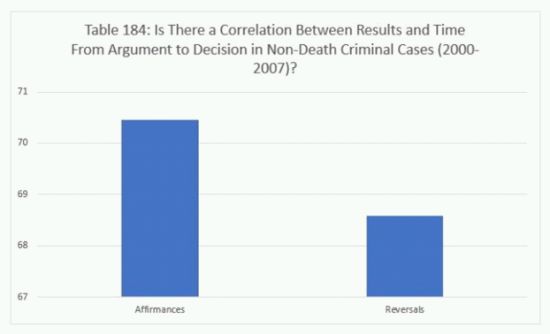Over the past two weeks, we've demonstrated that in criminal cases as a whole, affirmances are pending substantially longer between grant of review and oral argument than reversals are – roughly 900 days more between 2000 and 2007, and more than 1000 days more between 2008 and 2016. So I wondered – to what extent is the enormous margin explained by the very high affirmance rate in death penalty cases? We recalculated the criminal case statistics, dividing the data into non-death penalty and death penalty cases.
Between grant of review and oral argument, affirmances were pending longer for non-death penalty cases than reversals. Affirmances took an average of 515.43 days from grant to argument, while reversals were pending for 468.6 days. The data is quite variable – the standard deviation for affirmances between grant and oral argument is 300.68, and the standard deviation for reversals is 235.35.

The relationship between the variables is similar for the lag time between oral argument and the decision. Affirmances averaged 70.45 days from argument to decision between 2000 and 2007. Reversals averaged 68.59 days. Not surprisingly, the data for lag times from argument to decision does not vary widely. The standard deviation for affirmances is 16.05. The standard deviation for reversals is 17.49.

Join us back here tomorrow as we turn our attention to the Court's death penalty cases between 2000 and 2007.
The content of this article is intended to provide a general guide to the subject matter. Specialist advice should be sought about your specific circumstances.

